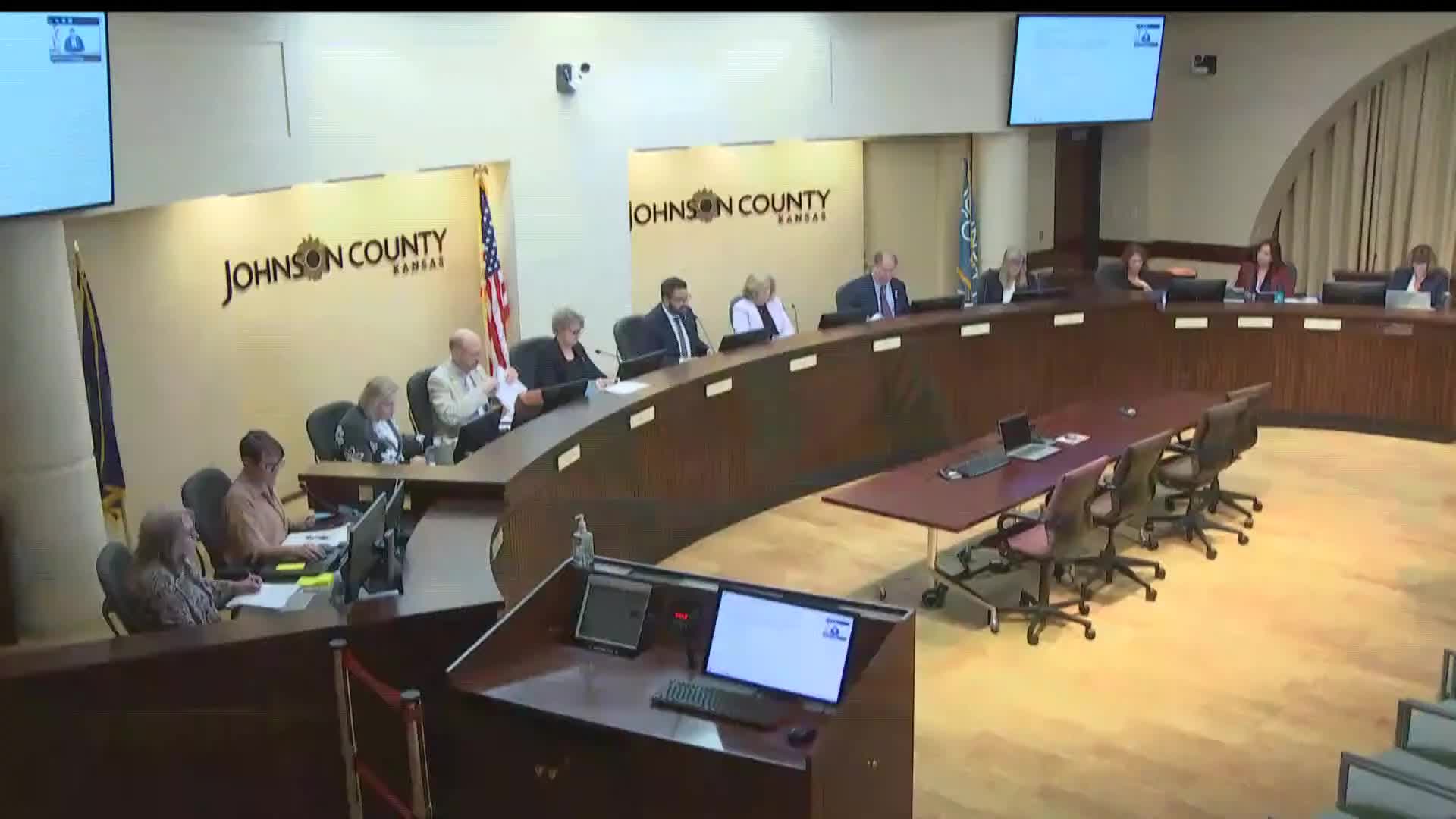Judge: Eviction‑mediation pilot has cut returns to court to under 1%; 74% avoid judgment
October 10, 2025 | East Consolidated Zoning Board, Johnson County, Kansas
This article was created by AI summarizing key points discussed. AI makes mistakes, so for full details and context, please refer to the video of the full meeting. Please report any errors so we can fix them. Report an error »

Johnson County’s eviction‑mediation pilot has produced measurable reductions in courtroom returns and writs of restitution, District Magistrate Judge John McEntee told the Board of County Commissioners on Oct. 9.
Judge McEntee, who took the bench in late 2022 and helped design the pilot, said the court required mediation for certain eviction filings and that the program — funded in part by the county — has completed just over 700 mediations in its two‑year run. "Fewer than 1 case in 100 of the cases returned to the courtroom," he said, and about 74% of mediated cases avoided a money or possession judgment. Approximately 32% of households that used mediation were able to remain in the same tenancy.
The judge described Kansas’ statutory eviction timeline to illustrate the program’s context: a three‑day notice to pay or vacate, a 14‑day window to an answer hearing, and a further 14‑day window to trial on possession, after which sheriffs may execute writs of restitution. McEntee said the program requires tenants who assert a defense to appear in person for a mediation session, which is staffed by volunteer mediators who receive a stipend.
Demographic and outcome data McEntee cited during the presentation include: about 59% of mediation participants identified as women; about 41% identified as Black or African American and about 10% identified as Latino; the median age of tenants was 42; and most participants were not repeat eviction filers — 78.6% said they had not had an eviction in the prior five years. McEntee said most tenants faced eviction after one to two months of unpaid rent and that nearly 90% were at least $1,000 behind.
Judge McEntee said the pilot has drawn interest from other Kansas counties and recognition from national organizations. "If people get the opportunity to mediate a case, sometimes they can come to an agreement," he told the board, noting that mediation places more of the outcome control in the hands of the parties and avoids the risks and costs associated with forcible removal.
County stakeholders and commissioners described the program as a collaborative effort among courts, county housing, epidemiology and the sheriff’s office. Commissioners praised the pilot’s results and noted consideration of broader state‑level best practices and potential legislative recommendations.
Judge McEntee, who took the bench in late 2022 and helped design the pilot, said the court required mediation for certain eviction filings and that the program — funded in part by the county — has completed just over 700 mediations in its two‑year run. "Fewer than 1 case in 100 of the cases returned to the courtroom," he said, and about 74% of mediated cases avoided a money or possession judgment. Approximately 32% of households that used mediation were able to remain in the same tenancy.
The judge described Kansas’ statutory eviction timeline to illustrate the program’s context: a three‑day notice to pay or vacate, a 14‑day window to an answer hearing, and a further 14‑day window to trial on possession, after which sheriffs may execute writs of restitution. McEntee said the program requires tenants who assert a defense to appear in person for a mediation session, which is staffed by volunteer mediators who receive a stipend.
Demographic and outcome data McEntee cited during the presentation include: about 59% of mediation participants identified as women; about 41% identified as Black or African American and about 10% identified as Latino; the median age of tenants was 42; and most participants were not repeat eviction filers — 78.6% said they had not had an eviction in the prior five years. McEntee said most tenants faced eviction after one to two months of unpaid rent and that nearly 90% were at least $1,000 behind.
Judge McEntee said the pilot has drawn interest from other Kansas counties and recognition from national organizations. "If people get the opportunity to mediate a case, sometimes they can come to an agreement," he told the board, noting that mediation places more of the outcome control in the hands of the parties and avoids the risks and costs associated with forcible removal.
County stakeholders and commissioners described the program as a collaborative effort among courts, county housing, epidemiology and the sheriff’s office. Commissioners praised the pilot’s results and noted consideration of broader state‑level best practices and potential legislative recommendations.
View the Full Meeting & All Its Details
This article offers just a summary. Unlock complete video, transcripts, and insights as a Founder Member.
✓
Watch full, unedited meeting videos
✓
Search every word spoken in unlimited transcripts
✓
AI summaries & real-time alerts (all government levels)
✓
Permanent access to expanding government content
30-day money-back guarantee

